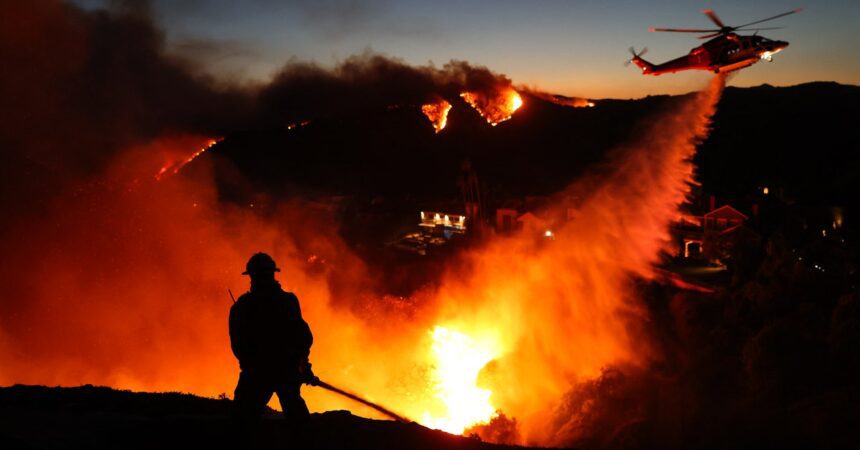The Wildfires of Southern California: A Deep Dive into the Crisis
As Southern California grapples with an unprecedented wildfire crisis driven by extreme weather conditions, the urgency of the situation cannot be overstated. The interplay of the Santa Ana winds, drought, and climate change is creating an environment ripe for catastrophe. In this blog post, we’ll explore the current wildfire landscape, the meteorological phenomena at play, and the broader implications of climate change on fire season in California.
The Current Situation
Recent reports have highlighted the alarming spread of wildfires across Los Angeles County. Evacuation orders have displaced tens of thousands of residents as three major fires—the Palisades Fire, Hurst Fire, and Eaton Fire—have ravaged over 13,000 acres and are currently at zero percent containment. These fires have become some of the most destructive in California history, fueled by the potent combination of high winds reaching up to 100 mph and extremely dry conditions in the area.
Residents received urgent alerts warning of the increasingly dangerous conditions, and as firefighters struggle against high gusts that have grounded firefighting aircraft, the situation escalates into a full-blown crisis. The urgency of the firefighting response is clear, as officials stated: “All residents of Los Angeles County are in danger.”
Understanding the Santa Ana Winds
Santa Ana winds are a regular occurrence in Southern California, typically seen during late summer and early fall. They are caused by a high-pressure system pushing dry air inland from the desert regions, leading to strong winds that funnel down to coastal areas. Jason Moreland, a senior meteorologist, describes the phenomenon as akin to a hose being pinched—a release of pressure that manifests in formidable gusts.
This year, however, the winds are more intense than usual, attributed to a dip in the jet stream near Mexico’s Baja Peninsula, allowing stronger winds to reach inhabitable areas where they can wreak havoc on the dry, and often drought-stricken, vegetation.
The Role of Climate Change
While weather patterns are responsible for the immediate conditions fueling these fires, longer-term changes due to climate change play a critical role in increasing California’s wildfire threats. Research scientists, like Kaitlyn Trudeau and Noah Diffenbaugh, have pointed out that climate change has led to greater variability in precipitation, resulting in increasingly hot, dry conditions earlier in the fire season.
With Southern California experiencing record-low rainfall during the typical wet season—from October through April—drought conditions have become more pronounced. The seasonal overlap between windy and dry conditions has narrowed, creating a perfect storm for devastating wildfires.
Looking Ahead: The Future of Wildfires in California
The present crisis is a stark reminder of how intertwined natural climate variability and human-induced climate change can be. While the meteorological conditions of Santa Ana winds are not new, the increased intensity and frequency of dry conditions present a significant challenge for firefighting efforts and community safety.
To mitigate the escalating risks, experts emphasize the need for comprehensive climate action and adaptation strategies. This includes better land management practices, increased investment in firefighting resources, and community preparedness initiatives for at-risk populations.
As we navigate this ongoing crisis, one thing is clear: the need for awareness, preparedness, and action is more pressing than ever. We cannot ignore the signs—it’s crucial to adapt to the new reality of our warming climate, as wildfires will be an ever-present hazard, especially in regions like Southern California.
Conclusion
Southern California’s current wildfire crisis illustrates the potent mix of natural disasters exacerbated by climate change. As communities evacuate and face the unpredictable threat of fire, it is a reminder of the need for continued research into our changing climate and the development of robust strategies to protect our environment and our lives. Ensuring community resilience in the face of this crisis might be one of the most significant challenges we collectively face in the coming years.










